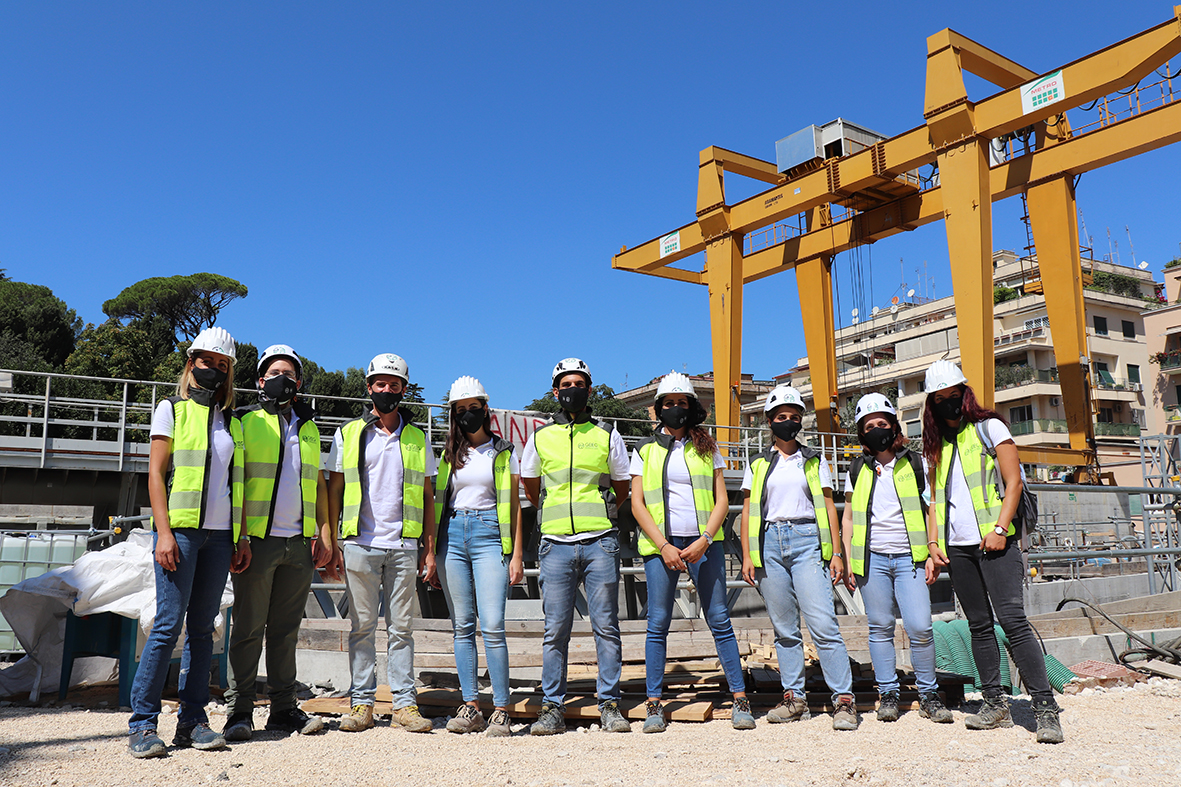Similarly to what happens along Via dei Fori Imperiali, also in Piazza del Colosseo the construction site of the Line C becomes a tool through which to convey historical and archaeological information to citizens and the millions of tourists from all over the world. Starting from August 1, 2019, in fact, along the over 200 meters of fencing of the Pozzo Q18, functional to the realization of the future Fori Imperiali station, a graphic installation was created that tells over 20 centuries of history in 14 stages. The construction site, located between Via dei Fori Imperiali (height Metro B exit) and Piazza del Colosseo, is located in the heart of the most important archaeological area in the world, intercepting the most significant tourist flow for the Capital. Hence the choice, by the promoter of the initiative, The Colosseum Archaeological Park, to use the construction site fences to convey on one side the story in images about the history of the square, from the imperial age to the present, and on the other the indications for orientation to the Park visit (tickets, prices, services, hours and types of educational visits).
In particular, on the side of the fence that flanks the square the installation takes the form of a timeline: in 14 stages enclosed within ovals, over 20 centuries of history are told.
The story starts from the square, once Nero’s pond in which the majestic Emperor’s Colossus was reflected: one will be replaced after a few years by the Amphitheater, the other moved later by Hadrian for the construction of his grand Temple of Venus and Rome. The narrative then extends to the whole area touching the Meta Sudans and the arch of Constantine, and tells the new uses of the Colosseum over the centuries, up to the clearing of Via dell’Impero in the fascist era and the construction of the Metro B. The journey ends in our days, passing through the motorcycle tour of Gregory Peck and Audrey Hepburn in the famous film “Roman Holidays”.
On the side along Via dei Fori Imperiali, instead, all the useful information for visitors and tourists is located: the main entrances to the Park, the position of the ticket offices, the price of the integrated Colosseum-Roman Forum-Palatine ticket; on the opposite side there are indications for the complete range of available tickets (in addition to the integrated one, the Arena ticket, the SUPER ticket, and the new Forum Pass (which connects the Roman Forum and the Imperial Forums) with an in-depth study on services, visiting rules, times, and the various types of educational visits.
The timeline ends with an invitation to collaborate to protect a millennial heritage: “The appeal to respect places that for 2000 years have welcomed anyone who walks on their history, written in three languages (Italian, English and Chinese) as all texts, – says Alfonsina Russo, Director of the Colosseum Archaeological Park – is the hope of wanting to share with all our audience and the whole city of Rome our past, to transmit to future generations the beauty and meaning of one of the most iconic places in the Western world“.
The project was promoted by the Colosseum Archaeological Park (Alfonsina Russo, Rossella Rea, Elisa Cella and Federica Rinaldi), with the design of Electa Mondadori and the realization of Metro C ScpA on behalf of Rome Metropolitane.


